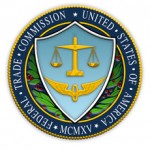This blog is cross-posted from the WorkforceGPS site, see https://youth.workforcegps.org/blog/general/2017/01/18/15/08/EdLaborPartnership.
WIOA places heightened emphasis on the alignment of programs that serve out-of-school youth in order to ensure they obtain the skills necessary to prepare for successful workforce participation and continued educational achievement.
The Workforce Innovation and Opportunity Act (WIOA), signed into law on July 22, 2014, presents a unique opportunity for collaboration among the U.S. Department of Labor (DOL), the U.S. Department of Education (ED), States, local workforce development areas, other workforce and education partners, as well as social service providers, in order to improve the lives of our nation’s out-of-school youth (OSY). WIOA places heightened emphasis on the alignment of programs that serve out-of-school youth in order to ensure they obtain the skills necessary to prepare for successful workforce participation and continued educational achievement.
For many years, the adult education program, administered by ED and authorized under title II of WIOA, has reconnected older OSY with the educational system and equipped them with the foundational skills to pursue postsecondary education, training, and meaningful work. The formula youth program, administered by DOL and authorized under title I of WIOA, requires that 75 percent of funds be used on services for OSY, which will assist young adults in obtaining the necessary skills, including high school diplomas, to prepare for and complete postsecondary education and training and achieve high levels of career readiness. More than 5.5 million youth between the ages of 16 and 24 without a high school diploma or an equivalent are neither in school nor employed. By working together, State and local workforce and education partners can maximize the potential of these young adults through implementing evidence-based practices to support the successful achievement of their educational and career goals.
To facilitate these efforts, the U.S. Departments of Labor and Education (Departments) are releasing a technical assistance document that:
- provide strategies and examples of State and local partnerships that facilitate the reengagement of OSY;
- support communities working with in-school youth in accordance with WIOA; and
- address strategies for serving out-of-school English learners, current and former foster youth, and justice-involved youth.
Along with the technical assistance on OSY, additional documents may be distributed among all potential partners that serve youth and young adults. The technical assistance documents are available:
- Out of School Youth: https://youth.workforcegps.org/resources/2017/01/18/13/28/EKFA-OSY
- In School Youth: https://youth.workforcegps.org/resources/2017/01/18/13/58/EKFA_isy
- English Language Learners: https://youth.workforcegps.org/resources/2017/01/18/14/30/EKFA_English
- Justice Involved Youth: https://youth.workforcegps.org/resources/2017/01/18/14/11/EKFA_Justice
- Foster Care Youth: https://youth.workforcegps.org/resources/2017/01/18/14/52/EKFA_Fostercare
The technical assistance provided in these documents offers a number of examples of ways in which different partners can work together to build career pathways that are a combination of rigorous and high-quality education, training, and support services that align with local skill needs and prepare youth and young adults to be successful in secondary or postsecondary education programs and the labor market.
Ultimately, long-term success for OSY will require engagement beyond the scope of workforce and education agencies. It takes the engagement of entire communities to catalyze change and create multiple pathways to facilitate education, career, and lifelong success. These discussions, therefore, must include businesses, colleges and universities, State and district superintendents, teachers and other youth service providers, community-based organizations, local social service agencies, and families and youth themselves.
We hope this technical assistance series will support creative and impactful youth-focused strategies and be a resource in engaging these diverse partners in this important work. Together we will strengthen our nation’s workforce by supporting the nation’s youth in graduating from secondary and postsecondary education programs, participating successfully in career pathways, and achieving their career goals.

